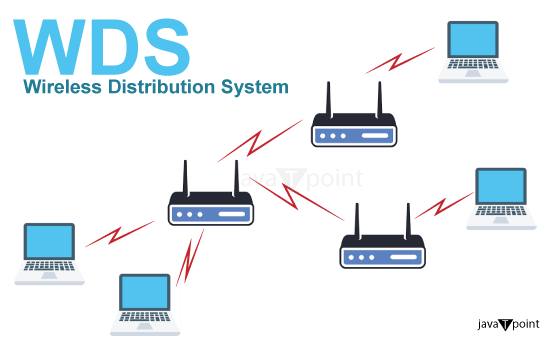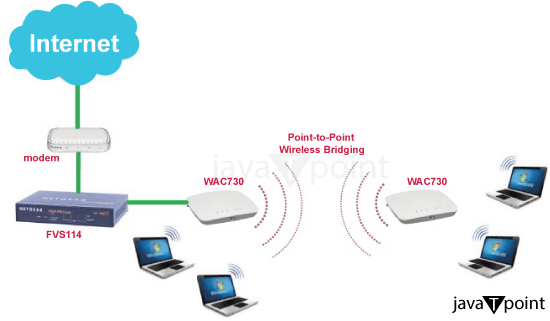Wireless Distribution System (WDS)IntroductionA wireless distribution system (WDS) is a method of connecting access points (AP) in a wireless local area network (LAN) without the use of a cable backbone. As per the IEEE 802.11 standard, a distribution system is the infrastructure that links access points. Wireless distribution systems are an approach to distributing equipment that allows a wireless network to grow. When the physical wire is not an option, they are utilized by a number of businesses to extend the reach of a network. 
Bridging a WLAN between two buildings is the most popular use for a wireless distribution system. In its most basic form, a WDS consists of two access points that are set up to communicate with one another by way of message forwarding and work with an antenna to facilitate line-of-sight connection. Two or more Wi-Fi base stations, also known as access points, that operate as a single system are needed to use a WDS. In addition to accepting new user connections, the access points transmit network packets from user sessions to various other WDS access points. Usually, an Ethernet switch is used to link access points. While the idea behind a mesh network and a WDS are similar, mesh networks are more recent and come with capabilities like mesh router configuration and automated discovery. Furthermore, compared to WDS, mesh networks are more fault-tolerant and dynamic. The mesh network can locate other routes if a link within the mesh router fails. On the other hand, in the case that a WDS link breaks, there is no backup failover method. How WDS Works?WDS works by utilizing a bridge-like technique to connect numerous wireless access points to establish an expanded wireless network. Because each WDS access point is set up as a bridge, it may serve client devices (such as laptops and smartphones) within its coverage area and simultaneously engage in wireless communication with other WDS-enabled access points. By exchanging management frames and data over the air, the WDS-enabled access points build a cohesive network architecture. The following are the main aspects of understanding how WDS works:
How to configure a wireless distribution systemTwo or more access points must be set with the same SSID in order to create a distributed WLAN. A single Layer 2 broadcast domain contains a single logical network made up of all access points set with the same SSID; hence, communication between them is essential. This is accomplished via the distribution system. Advantages of WDS:
Considerations for WDS Implementation
Applications of Wireless Distribution Systems
ConclusionIn summary, a wireless distribution system (WDS) is a networking system that allows wireless coverage to be expanded by establishing wireless connections between several access points. When installing physical Ethernet connections is not practicable, WDS enables better network coverage, seamless roaming, and easier setup. A successful WDS deployment, however, requires careful design, configuration, and consideration of potential security and performance concerns.
Next TopicNetwork Time Protocol
|
 For Videos Join Our Youtube Channel: Join Now
For Videos Join Our Youtube Channel: Join Now
Feedback
- Send your Feedback to [email protected]
Help Others, Please Share









